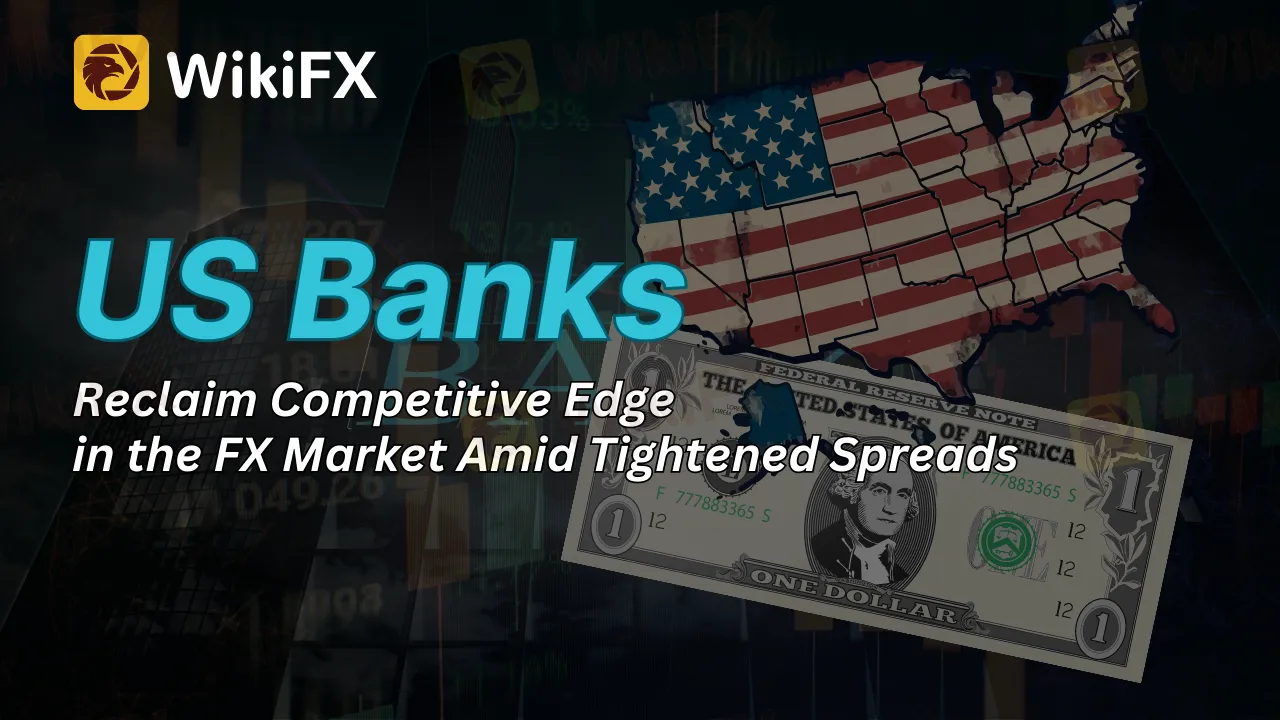简体中文
繁體中文
English
Pусский
日本語
ภาษาไทย
Tiếng Việt
Bahasa Indonesia
Español
हिन्दी
Filippiiniläinen
Français
Deutsch
Português
Türkçe
한국어
العربية
US Banks Reclaim Competitive Edge in the FX Market Amid Tightened Spreads
Abstract:Discover how US Banks are reshaping the FX market, narrowing spreads, and reclaiming their competitive edge amid SA-CCR implementation challenges.

In the dynamic and competitive world of foreign exchange (FX) swaps and forwards, US banks have been significantly reshaping the landscape over the past year. The catalyst for this transformation has been the strict implementation of the standardized approach to counterparty credit risk (SA-CCR), which has presented both challenges and opportunities for the sector.
Under the SA-CCR, US banks were compelled to charge wider spreads than their European and Canadian counterparts to account for the increased risk-weighted assets produced by their positions. At one point in March last year, the gap in spreads quoted for G10 FX swaps between US and European banks was a substantial 20 basis points, as indicated by data compiled by BestX, a renowned third-party transaction cost analysis provider.
This led to a decline in market share for several US banks, with industry giants such as Citi and JP Morgan experiencing a noticeable impact. The wider spreads placed these banks in a tough position in an already competitive environment, forcing them to innovate and devise strategies to cope with the heightened capital costs.
However, the landscape has changed noticeably this year. US banks have made strategic adjustments, effectively narrowing their swaps pricing. According to buy-side participants, while European banks' spreads remained static, US banks achieved a tighter pricing structure. Evidence provided by BestX corroborates this shift, revealing that the spread differential has significantly reduced to just 5bp.
The tightened spreads have yielded positive results for US banks, particularly in market share. Heavyweights like Bank of America, Goldman Sachs, Morgan Stanley, and Wells Fargo have seen a rise in the size of their FX forwards book during the first quarter of 2023, based on data from Counterparty Radar.

So, how did the US banks manage to normalize their prices in such a competitive environment?
One strategy has been to incentivize asset managers to collateralize their trades. While the SA-CCR penalizes non-cleared trades, collateralizing them provides a mitigating effect. Though there's no regulatory obligation for buy-side firms to post collateral on FX swaps and forwards, US banks have leveraged competitive pricing to encourage asset managers to sign credit support annexes.
Furthermore, US banks have shown marked improvement in managing trading costs. Dealers' interest in certain types of business has evolved, and they have adapted their spreads accordingly. Prior to this, such adaptation was not feasible due to the lack of granular, up-to-date data on risk-weight costs at banks. This new approach has allowed internal bank trading desks to access increased budgets, offering more competitive FX swaps pricing.
In addition, US banks have begun utilizing optimization vendors such as Osttra and Capitolis more efficiently. The latter recently completed an optimization run with a record 20 firms, successfully reducing $341 billion in notional used for the SA-CCR calculation.
While it is suspected that US banks have developed other means to offset capital costs, these measures may exist in areas of the trade lifecycle that are not typically analyzed in buy-side transaction cost reports. As a result, while not all US banks are affected equally, each has been dealing with the SA-CCR in its own unique way. This underscores the resilience and adaptability of US banks and suggests that the temporary upper hand enjoyed by EU and Canadian banks could indeed be short-lived.
Stay up-to-date with the latest developments in the world of FX trading by installing the WikiFX App on your smartphone. Download the App here: https://www.wikifx.com/en/download.html

Disclaimer:
The views in this article only represent the author's personal views, and do not constitute investment advice on this platform. This platform does not guarantee the accuracy, completeness and timeliness of the information in the article, and will not be liable for any loss caused by the use of or reliance on the information in the article.
Related broker
Read more

US Dollar Insights: Key FX Trends You Need to Know
Commodity Trading Advisors (CTAs) have maintained a strong long position in the US dollar, with gains in the previous five weeks and 13 of the prior 14 weeks.

WikiFX Announces New Promotional Campaign Targeting the Philippine Market
As part of our strategic expansion in Southeast Asia, WikiFX is excited to announce a new promotional initiative focused on the Philippine market.

New Year’s First Trade KOL Posting Challenge
Start the year with a bang and showcase your forex trading prowess in the New Year’s First Trade KOL Posting Challenge hosted by WikiFX! This exciting opportunity is designed specifically for Key Opinion Leaders (KOLs) who are ready to lead their teams and engage their followers in the world of forex trading.

Indonesia officially joins the BRICS countries
Indonesia's decision to join the BRICS group will not only enhance economic cooperation within BRICS countries but is also expected to have a profound impact on global trade, investment, and the currency system.
WikiFX Broker
Latest News
Ghana Trader Jailed for $300K Forex and Crypto Scam
US Dollar Surge Dominates Forex Market
Hong Kong Police Bust Deepfake Crypto Scam Syndicate Involving $34 Million
Is it a good time to buy Korean Won with the current depreciation?
Pepperstone Sponsored the "Aston Martin Aramco Formula One Team"
ACY Securities Integrates MetaTrader 5 to Enhnace Copy Trading Service
Soegee Futures Review: Should You Trust This Broker?
Malaysian Pilot Loses RM1.36 Million in UVKXE Investment App Scam
Indonesia officially joins the BRICS countries
Attention! Goldman Sachs Cuts Gold Target to $2910
Currency Calculator






